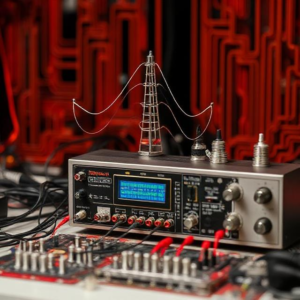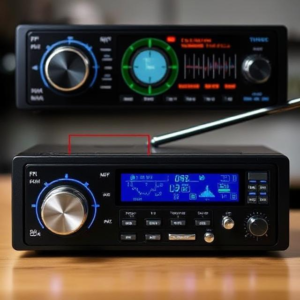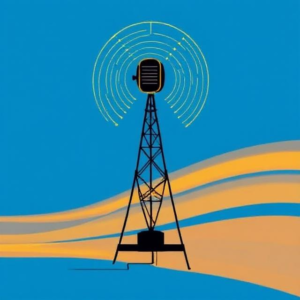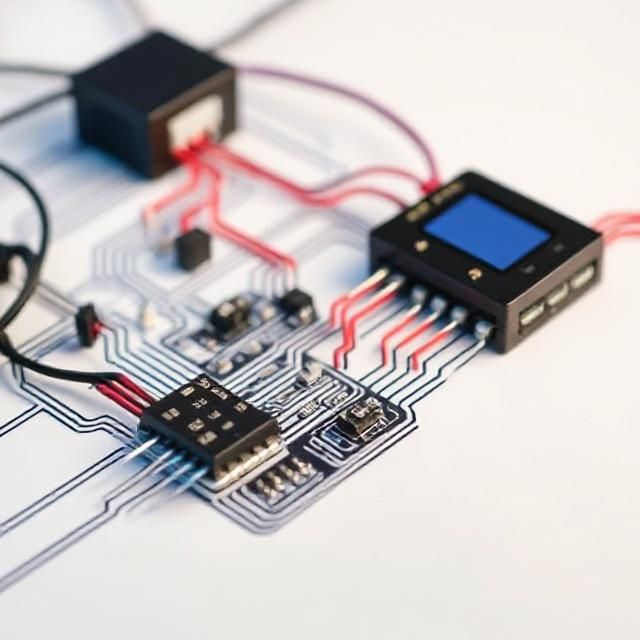What is a Tuned Amplifier?
A tuned amplifier is a type of amplifier specifically designed to amplify (boost) signals at a specific frequency or a narrow range of frequencies. These amplifiers are commonly used in RF systems, which deal with signals in the radio frequency range (typically from 20 Hz to 300 GHz).
In simpler terms, a tuned amplifier increases the strength of signals at certain frequencies, and it does so with a focus on only those frequencies you want to amplify, while minimizing others.
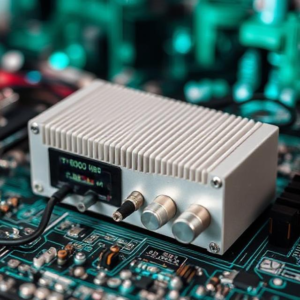
Why Do We Need Tuned Amplifiers?
When dealing with RF systems, such as radios, televisions, or communication systems, you often need to amplify signals that are at a certain frequency or a small range of frequencies. Regular amplifiers amplify all frequencies equally, but tuned amplifiers are designed to focus on a specific frequency band, such as a single radio station’s frequency.
For example:
- If you want to listen to a specific radio station (say 101.5 MHz), a tuned amplifier will amplify only the signals near 101.5 MHz and reject others. This is important because radio signals often overlap, and without this selective amplification, the system could pick up unwanted signals, causing noise or interference.
How Does a Tuned Amplifier Work?
A tuned amplifier works by having a tuning circuit in it, which is responsible for selecting the frequency range that you want to amplify. Here’s how it works step-by-step:
- Signal Input:
- An RF signal (like a radio station’s signal) is fed into the amplifier.
- Tuning Circuit:
- Inside the amplifier, there’s a tuning circuit (usually made of components like inductors and capacitors). This circuit is designed to resonate (or “tune”) at a specific frequency. Resonance means the circuit is most sensitive to the frequency you want to amplify.
- Amplification:
- The tuning circuit selects the desired frequency and passes it to the amplifying stage of the amplifier. This stage boosts the signal’s strength, making it stronger.
- Output:
- The amplified signal, now stronger and still at the selected frequency, is output from the amplifier.
Key Components in Tuned Amplifiers
- Inductors (L):
- Inductors are coils of wire that store energy in the form of a magnetic field. In tuned amplifiers, they help in the selection of the desired frequency.
- Capacitors (C):
- Capacitors store electrical energy and release it at specific moments. In tuned amplifiers, capacitors help the tuning circuit to resonate at the target frequency.
- Resonant Circuit:
- The combination of inductors and capacitors forms a resonant circuit. This circuit is carefully tuned to the frequency of interest and allows only those frequencies to pass through while filtering out others.
Types of Tuned Amplifiers
There are a few different ways that tuned amplifiers can be configured depending on the application and the system requirements:
- Single-Tuned Amplifier:
- A single-tuned amplifier has one tuning circuit, meaning it can amplify only one frequency at a time (or a very narrow range of frequencies).
- This is simple and effective when you want to amplify signals like a single radio station’s frequency.
- Double-Tuned Amplifier:
- A double-tuned amplifier uses two resonant circuits to amplify a wider range of frequencies. This can be useful for applications where you need to handle more than one frequency at once.
- Broadband Tuned Amplifier:
- Broadband amplifiers are designed to amplify a wider range of frequencies, but they still focus on signals within a certain band of frequencies, offering more flexibility than a single-tuned amplifier.
Advantages of Tuned Amplifiers
- Improved Signal Quality:
- By amplifying only the desired frequency and rejecting others, tuned amplifiers improve the signal-to-noise ratio (SNR). This means less interference and clearer signals.
- Selective Amplification:
- Tuned amplifiers ensure that only the frequencies you want are amplified. This is useful in applications where multiple signals are present and you want to avoid boosting unwanted signals.
- Reduced Interference:
- Because tuned amplifiers focus on a specific frequency range, they help filter out signals outside that range, reducing unwanted interference from other sources.
Applications of Tuned Amplifiers
Tuned amplifiers are used in many RF systems where it’s essential to amplify specific frequencies or narrow bands of frequencies. Here are some common applications:
- Radio Receivers:
- In radio receivers, tuned amplifiers are used to amplify the specific radio frequency of the station you’re listening to while filtering out all other stations.
- Telecommunication Systems:
- In communication systems (like cell phones, satellite systems, and TV transmission), tuned amplifiers are used to amplify specific channels or signals without interfering with others.
- Radar Systems:
- Tuned amplifiers in radar systems amplify the signals that bounce back from objects, enabling the radar to detect objects at specific frequencies.
- Audio Systems:
- Tuned amplifiers are also used in audio systems, such as audio equalizers, where different frequency bands (like bass, midrange, and treble) are amplified or cut to adjust sound quality.
In Simple Terms:
- A tuned amplifier is a special kind of amplifier that amplifies signals at a specific frequency (or a narrow band of frequencies).
- It works by using a tuning circuit (made of inductors and capacitors) that selects the frequency you want to amplify and boosts it while ignoring other frequencies.
- Applications: Tuned amplifiers are used in devices like radios, televisions, communication systems, and even radar to make sure the right signals are amplified and unwanted signals are minimized.

